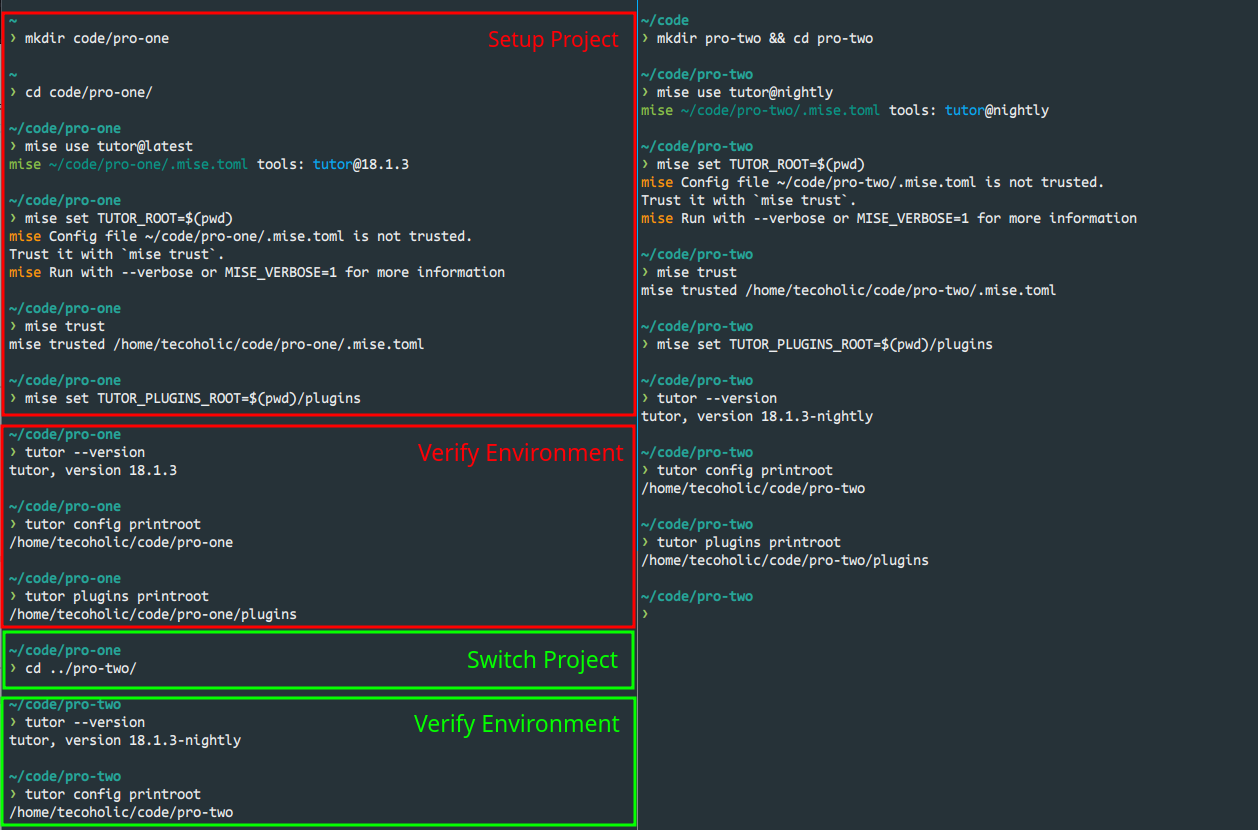Previously, I wrote about using mise as a replacement for Pyenv and NVM. In this post, I will document how I use it to manage Open edX Tutor versions for the different projects I work on.
Tutor Version Manager
There is already an existing solution to managing multiple Tutor versions and projects called the Tutor Version Manager or TVM. It provides a nice cli to create projects with specific Tutor versions and handle the project environments with the correct context.
However, I have the same issues with TVM that I have with Tutor. It is a Python tool that must be pip installed. That means:
- I would need to set up a virtual environment dedicated to TVM
- Activate that virtual environment before using TVM
TVM doesn’t simply manage Tutor versions, it also manages Tutor Projects. Each TVM project comes with its own virtual environment. So, TVM requires activating and deactivating it. From the TVM docs:
If you also have another environment like a python virtual environment, you need to deactivate each virtual environment in order. For example, if you have
(venv) [v12.2.0@project-name], you need to rundeactivateand thentvmoff.
I didn’t want to do this. I don’t want to hold the context of the environments I am working with.1
Mise & asdf-tutor
So, I created asdf-tutor to let Mise do all this work. Since Mise uses the asdf plugins as a backend, I can now use it to automatically set Tutor versions and project environments. Here is how it typically works.
Setting up a tutor project
- Create a new directory
- Tell Mise which version of tutor to use
- Setup tutor env vars
mkdir my-project
cd my-project
mise use tutor@18 # or tutor@latest # or tutor@nightly
mise set TUTOR_ROOT=$(pwd)
mise set TUTOR_PLUGINS_ROOT=$(pwd)/plugins
mise trust
Working on a tutor project
cd my-project
That’s all.
Working with multiple projects
Setup multiple projects the same way as above. Switch projects by navigating to the folder.

Removing a project
Just delete the directory.2
Finally…
I really like Mise. Offloading the job of handling tool versions and environment management is something I have really come to depend on regularly. It makes everything effortless. Changing directory is all that’s needed.3
Footnotes
-
I understand, remembering the order of environments and deactivating them is strictly not necessary. I could simply close the shell and create a new one which is clear of these contexts. But mise has spoiled me. I simply change directories, and it takes care of everything else. ↩
-
I just mean the project environment. You probably need to delete Docker images, containers…etc.,. But that’s in the domain of “Tutor” and not “Mise”. ↩
-
One can achieve a very similar setup using direnv and pyenv-virtualenv auto-activation as well. In fact, here is a guide to do just that and much more. ↩